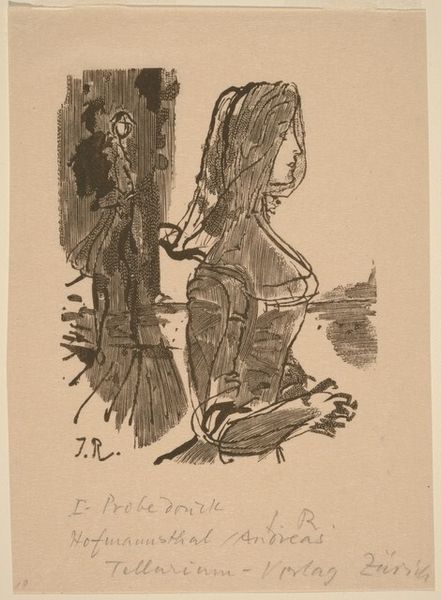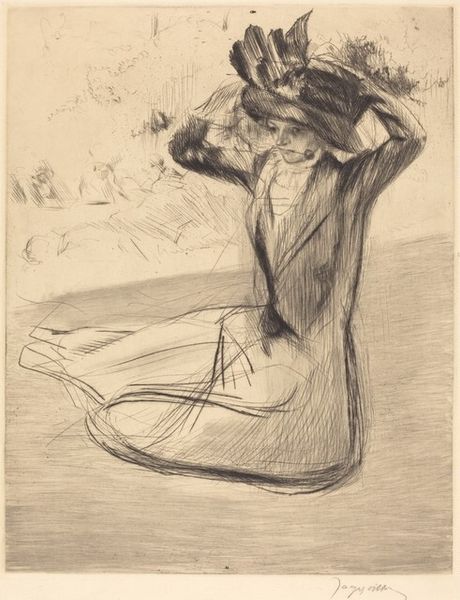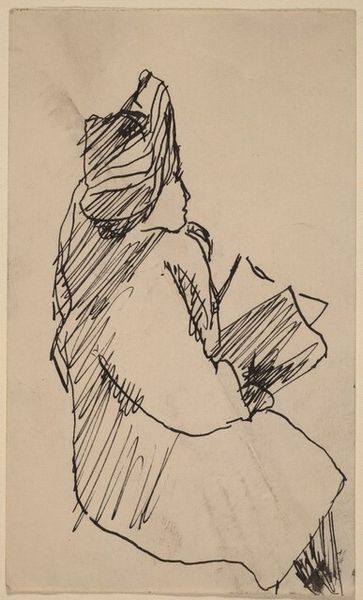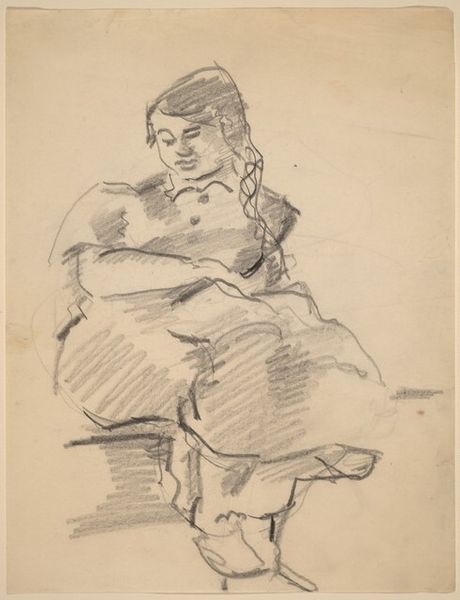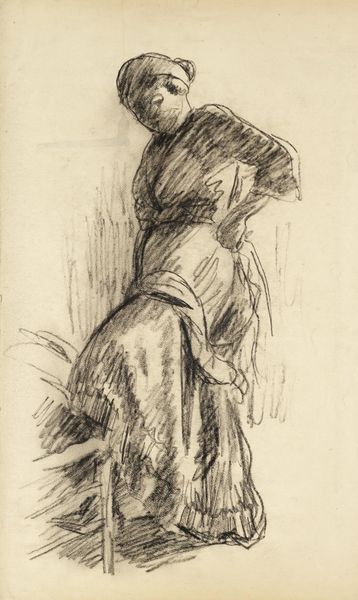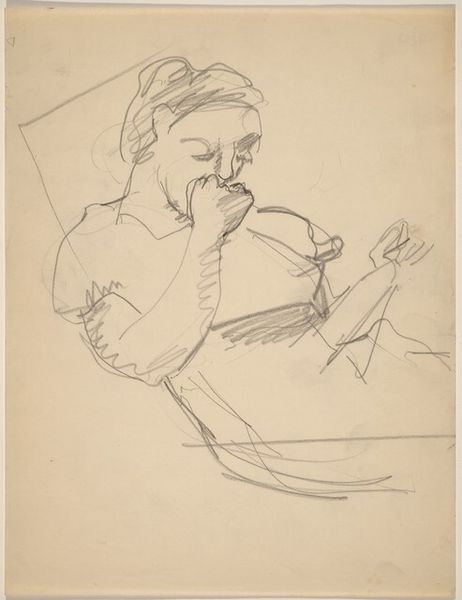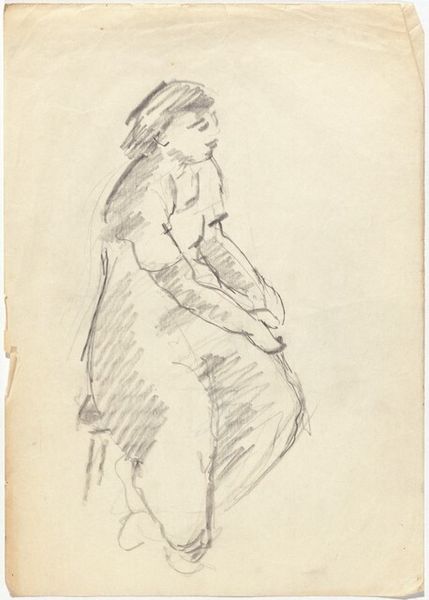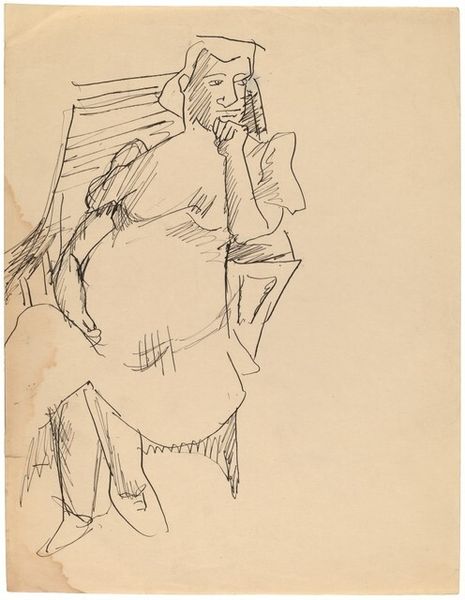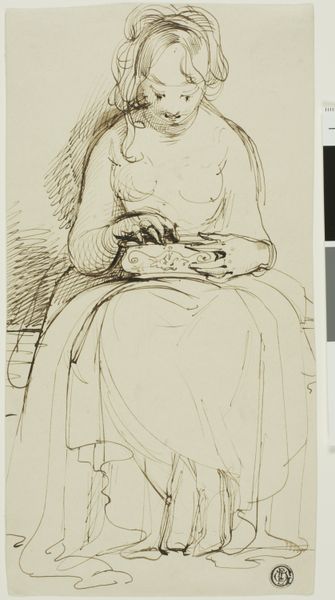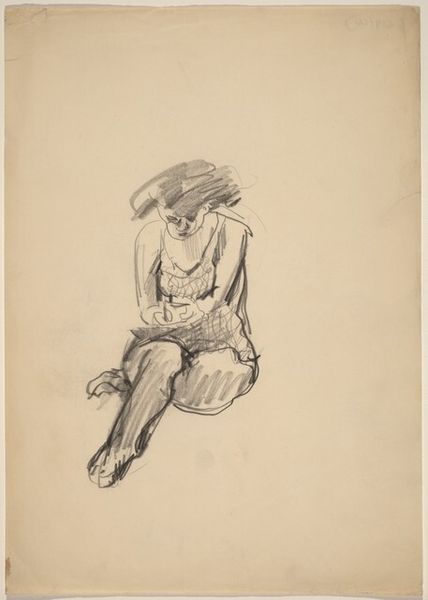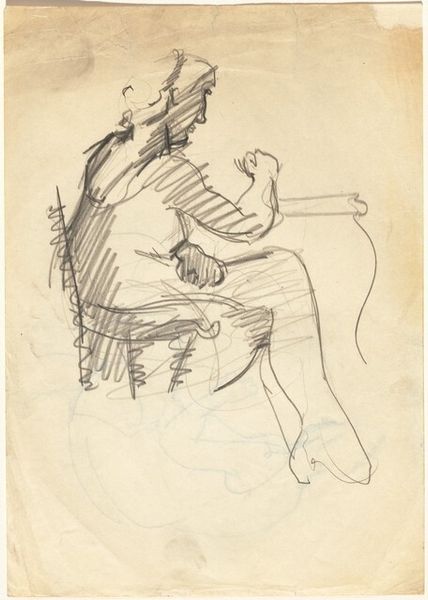
drawing, print, ink
#
portrait
#
pencil drawn
#
drawing
#
ink drawing
# print
#
pencil sketch
#
figuration
#
ink
#
pencil drawing
#
expressionism
#
portrait drawing
Dimensions: plate: 20.8 x 16 cm (8 3/16 x 6 5/16 in.) sheet: 37.4 x 26.5 cm (14 3/4 x 10 7/16 in.)
Copyright: National Gallery of Art: CC0 1.0
Curator: This is Marc Chagall's "The Grandmother," a drawing from 1922 rendered in ink. Editor: There’s such immediacy in those lines. You can almost feel the scratch of the pen, the deliberate mark-making in this portrait. There is this dog-like creature beside her and the entire rendering feels so haunted. Curator: Considering the context, that intensity resonates. Chagall was working in a post-war Europe still reeling, grappling with immense social and economic changes, as well as navigating his own identity as a Jewish artist. His means of making and of production speaks so eloquently of that turmoil. Here is only paper and ink used in the creation of what many would consider an heirloom; yet here this simple drawing has survived a tumultuous century. Editor: Absolutely. You see that etched quality; those cross-hatched lines—they really emphasize the weight of the years on her face, in the fabric of her shawl. Her hunched posture and the way she peers at that letter... it's a concentrated image of lived experience and resilience. One wonders about the power and plight of the older woman here and how the domestic sphere offered possibilities and freedom as well. Curator: The seeming sketchiness is interesting too. This wasn't a quick sketch by any means but perhaps the result of layering print and ink to add complexity; the medium is really doing some complex work in the context of post war disillusionment. It does remind one that in Chagall's social sphere at this time print media such as this was consumed daily and mass produced as compared to the elitism associated with traditional arts. Editor: It reflects, too, how older generations are often burdened with the stories, with the traumas, of their families. The letter she holds might contain anything. It becomes symbolic of untold histories. Curator: It is, indeed, remarkable how Chagall leverages this limited medium to invoke not only her personal history, but that of an entire epoch. The making becomes a powerful statement on class, history, and material transformation. Editor: I agree. Seeing it framed in this way adds new layers to its narrative. The material makes the art much more compelling. Curator: Likewise. This examination has highlighted for me the social and cultural forces acting within and outside of this compelling piece of art.
Comments
No comments
Be the first to comment and join the conversation on the ultimate creative platform.
